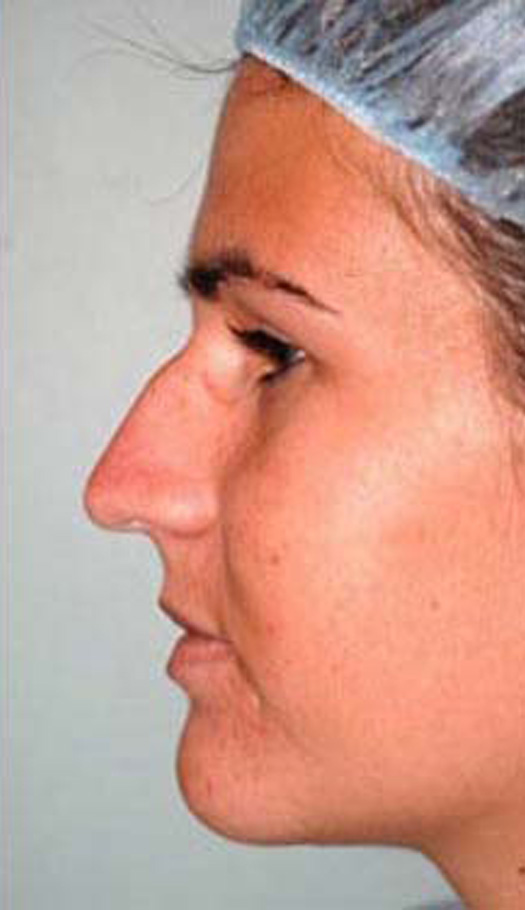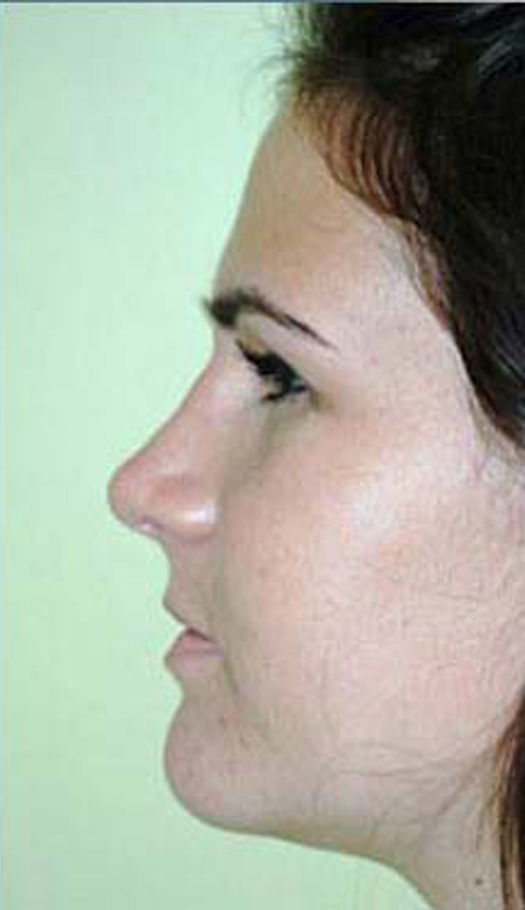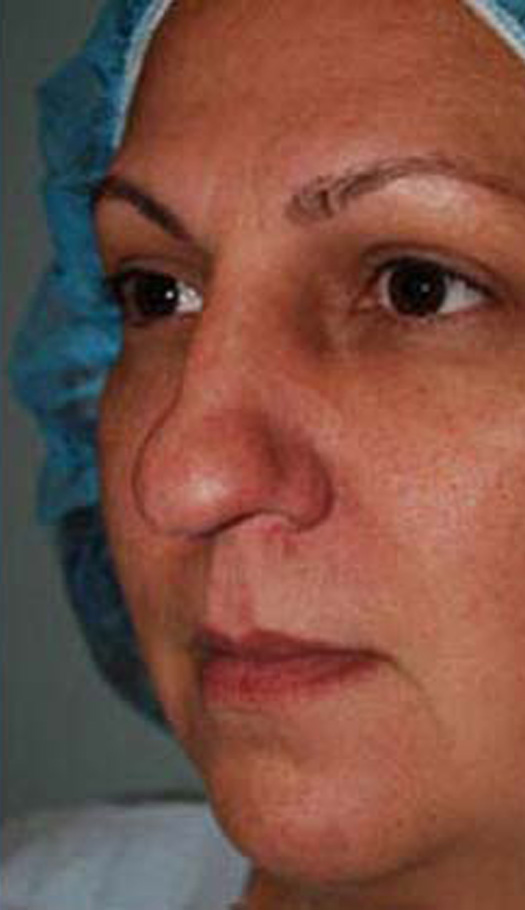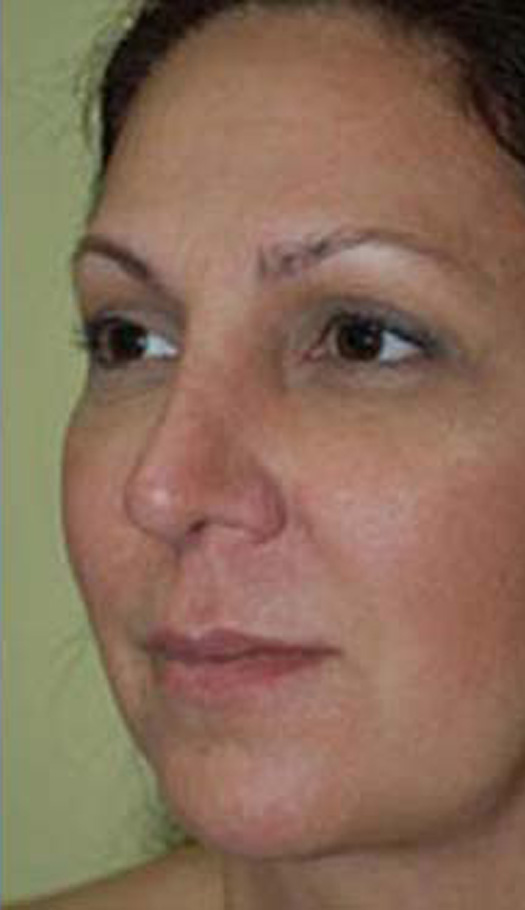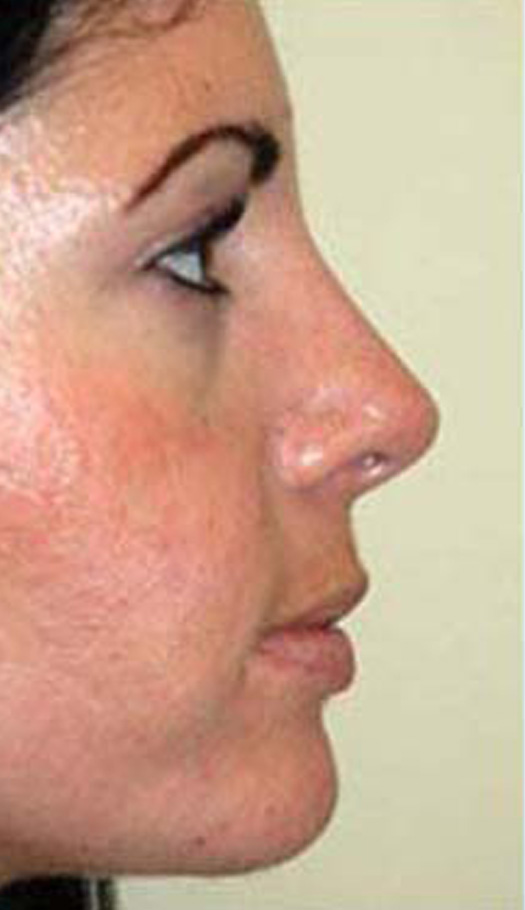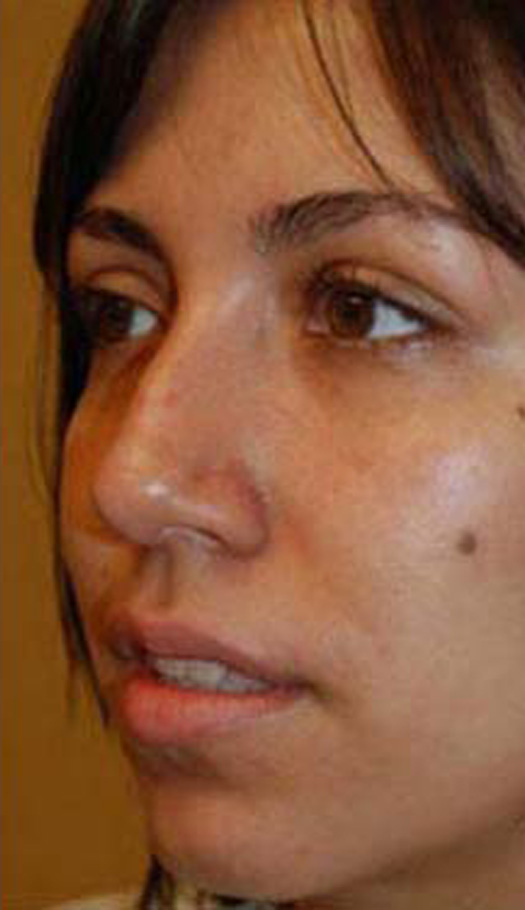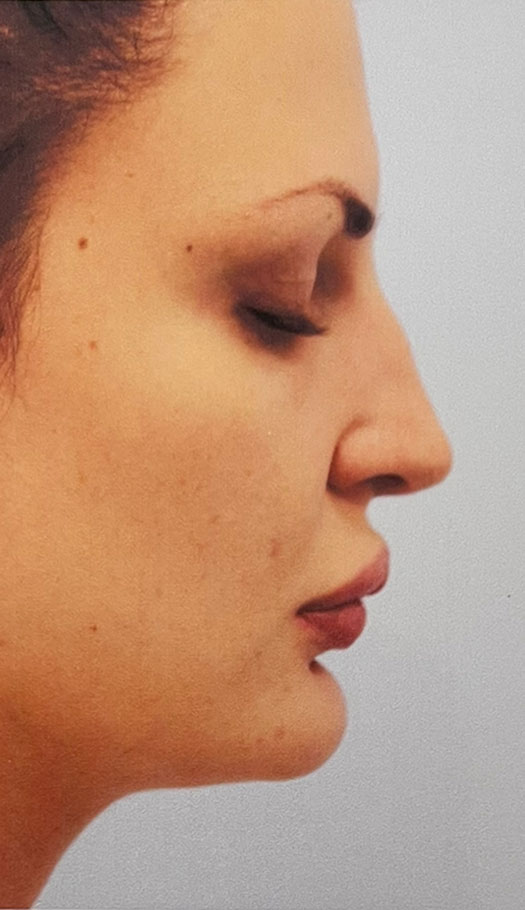
Your nose is one of the most distinct features of your face, and its function is essential in your everyday life. Patients bothered by the shape of their nose may experience a variety of complications, which can be corrected with rhinoplasty Miami.
When a patient decides to undergo rhinoplasty Miami and is looking for the best plastic surgeons in the area, Avana Plastic Surgery is often the place they choose. Our background in different types of nose surgery and reputation is top-of-the-line. We can improve a variety of common concerns about the external contour of the nose.
This article covers the basics of rhinoplasty Miami. Whether you choose closed or open rhinoplasty, you must prepare by learning about the procedure, the risks and complications involved, the nose surgery recovery process, costs, and having all your questions answered during your initial consultation at Avana Plastic Surgery.
What is rhinoplasty surgery?
Rhinoplasty, popularly known as “nose reshaping” or “nose job,” can help restore balance and harmony to your face. Whether you are bothered by a bump on the bridge, flared nostrils, or feel unsatisfied with the shape of the nasal tip, rhinoplasty Miami will help you correct all these issues.
Rhinoplasty surgery can be used for cosmetic and reconstructive reasons or done to correct a specific problem. Patients suffering from breathing problems have also reported improvement after nose plastic surgery as they can now breathe freely through the nose. According to the American Society of Plastic Surgeons: “Correction of a deviated septum, one of the most common causes of breathing impairment, is achieved by adjusting the nasal structure to produce better alignment.”

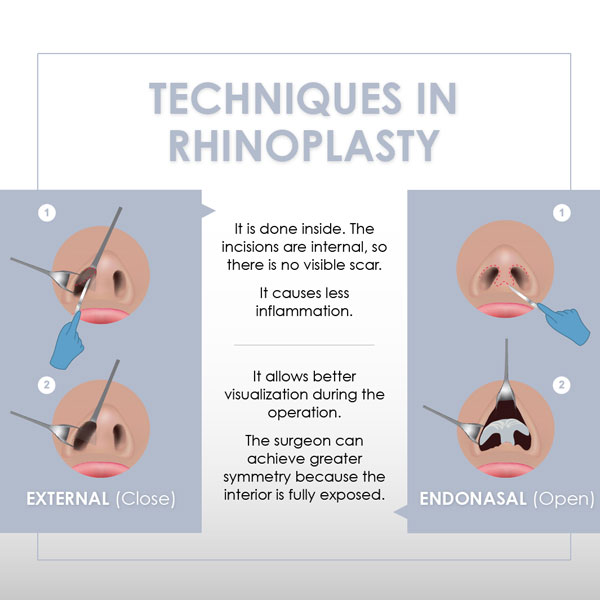
Benefits of Nose Plastic Surgery
Some of the benefits this procedure offers are:
- Correction of structural issues – It is common for the nose to suffer accidents and injuries that may require a reconstructive rhinoplasty.
- Correction of congenital disabilities – Some patients may have nasal malformations caused by birth defects, which can be improved with rhinoplasty.
- Reduce snoring – Snoring is often caused by a deviated septum. Patients with this condition wake up frequently at night and don’t get enough rest. Nose plastic surgery can fix this problem.
- Improve your facial balance – Research shows that people generally look into a person’ eyes and nose first since these are the most noticeable parts of the face.
- It can make you look years younger - Rhinoplasty surgery can have an anti-aging effect. A new study by JAMA Facial Plastic Surgery, a medical journal published by the American Medical Association, demonstrates that patients can look 1.5 years younger on average after the procedure.
Candidates for Rhinoplasty
During your initial consultation at Avana Plastic Surgery, your surgeon will determine whether you are a good candidate for this procedure. Ideal candidates for the rhinoplasty procedure should maintain overall physical and mental health. Patients must also have reasonable expectations. Some characteristics to look for when determining candidacy for this procedure are:
- The patient is unhappy with how the nose has changed as he has gotten older.
- There is a nasal deformity that needs correction.
- The patient should be the right age. It is advised to wait until at least the mid-teens to undergo this procedure (between 13 and 16 years of age).
- All medical conditions have been informed to the surgeon, so there are no unexpected reactions to anesthetics or medications.
- There is an understanding of what this procedure involves so that you can prepare accordingly.
Rhinoplasty Miami
Before & After Pictures
EXPLORE PHOTO GALLERYRhinoplasty Procedure
At Avana Plastic Surgery we strive to provide our patients with a unique rhinoplastic experience. We sincerely hope to build a relationship with our patients that improve their surgical journey. If you want to change your nose to look what you always wanted, for cosmetic or health reasons, we can talk you through the whole process and schedule a consultation with a rhinoplasty surgeon.
Your initial consultation with your Rhinoplasty specialist
Your initial consultation at Avana Plastic Surgery is designed for you to get to know your surgeon so you can discuss your aesthetic goals and desires. You will undergo a thorough examination and learn about rhinoplastic techniques. Some things you can bring during your initial consultation include:
- Photographs of how you want your nose to look like after surgery
- Someone to accompany you for support
- Questions you may have
It is essential you get to know your surgeon and determine whether his skill goes in line with your desired goals. View rhinoplasty before and after photos in our website or RealSelf. Talk about issues with your nose, changes you wish to undergo, and any other cosmetic concerns you may have. That should help you surgeon understand your aesthetic goals. The rhinoplasty surgery date and prices should be discussed as well.
Schedule A Free Consultation Today
Types of cosmetic nose surgery
There are two types of nose surgery performed at our clinic, each one having a specific technique to create the initial incision and help meet a range of needs.
CLOSED RHINOPLASTY
This procedure will demand significant skill from the surgeon since the corrections are made internally to avoid an incision through the nostrils. However, distortion of the nasal cartilage is possible since the entire procedure is performed through small surgical openings with lack of visibility. Also, the left and right nostrils are detached during surgery making it difficult to reposition the skin.
OPEN RHINOPLASTY
The open approach uses a bridging incision that connects the right and left nostril incisions. The nasal skin is then folded upward, so there is excellent visibility of the nasal skeleton. Therefore, the nasal cartilage has fewer chances of being distorted, and every section can be assessed in their natural alignment. In other words, while there is modest scarring, there is improved accuracy. This procedure is advised for patients with complex nasal anatomy.
Ethnic Rhinoplasty
Ethnic Rhinoplasty seeks to alter the nose to create a symmetrical appearance that goes in line with the patient’s ethnic characteristics. Whether you are seeking to undergo an Asian, Hispanic, Middle Eastern or African American nose job, nose plastic surgery requires special skill to be performed and to achieve the desired look.
PREPARING FOR A RHINOPLASTY SURGERY
In the weeks prior to rhinoplasty surgery, patients should endeavor to prepare for changes that will occur to their bodies. It’s essential you stay healthy to enable a good recovery. Follow instructions as provided by your surgeon and you should experience a successful rhinoplasty surgery and recovery. Some rhinoplasty recovery tips include:
- Have a healthy diet and nutrition regimen. Avoid alcohol and take vitamin C and iron supplements to boost healing.
- Stock up on pain medications, sleeping aids, antibiotics, and cold compresses to help reduce swelling.
- Arrange for transportation and a caretaker for the first two days of nose surgery recovery.
- Plan to take one to two weeks from work. Once the sutures and cast are removed, you can go back to work but only to perform light work for a few days until you fully recover.
- Attend any major professional or social duties prior to rhinoplasty surgery. Make sure surgery is scheduled at the most convenient time for you and your caretaker.
- Avoid some medications such as NSAIDs, vitamin E supplements and herbal medications that may interfere with anesthesia or promote bleeding.
- Quit smoking at least two weeks before surgery and don’t smoke for a few weeks following rhinoplasty surgery.
How is the rhinoplasty procedure performed?
The rhinoplasty procedure steps are as follows:
- Anesthesia is administered in accordance with your surgeon’s recommendation. Whether through general anesthesia or intravenous sedation, the patient will feel comfortable during the entire procedure.
- The incision is made by using an open or closed approach. These incisions help raise nasal cartilages and bones so that the structure of the nose is done correctly.
- The nose structure is reshaped and often reduced if the nose is too large. Additional cartilage grafts may be needed, most commonly grafted from the septum. In rare occasions, cartilage from the ear is used or rib cartilage.
- If the septum is deviated, it can be straightened and projections reduced so the patients can breathe easier.
- The incision is closed once the nose has been sculpted to the desired shape. Other incisions will be made as needed to help modify the size.
- Gradual changes will be seen and they will evolve to more permanent results.

Rhinoplasty recovery
Patients generally wear a splint during the first week of rhinoplasty recovery time. Swelling and bruising around the eyes is common, but it should go away in six months. After the nose has completely healed, the shape will be clearly seen. Patients are advised to avoid strenuous activities for three to six weeks and resume social activities within two to three weeks as advised by your surgeon.
- How to care for the site
- Medications that may assist during nose surgery recovery
- Concerns in the operated area
- Follow-up medical appointments with your plastic surgeon
- Get plenty of rest
- Take medications as prescribed
- Stay hydrated
- Apply ice packs to the surgical area to reduce swelling
- Don’t ignore any complications
- Protect your nose from injuries
- Avoid alcohol and tobacco
- Don’t skip your-follow up appointments
Rhinoplasty Risks and Complications
This procedure can carry the same complications as any other type of cosmetic surgery. These are crucial things to consider prior to nose plastic surgery. This is a highly individualized procedure and the side effects, risks, and complications can vary from patient to patient. Make sure you follow your surgeon’s instructions. That should help you avoid potential health complications. Some of the common risks associated with the rhinoplasty procedure are:
- Infection
- Bleeding
- Reaction to anesthesia
- Numbness
- Poor healing and wound closure
- Skin discoloration
- Bruising following rhinoplasty surgery can vary based on the extend of surgery
- Scarring
- Swelling around the eyes and nose
- Nerve damage
- Nasal overcorrection that may require a revision
- Patients may experience pain and discomfort after rhinoplasty surgery
Patients are advised to hire a qualified surgeon to perform this procedure so the rhinoplasty risks are less. You can ask questions during your initial consultation and make sure you understand the possible side effects, benefits, and recovery risks associated with rhinoplasty.
COST OF RHINOPLASTY MIAMI
The average rhinoplasty price in the Miami area is $6,425. This is based on 231 RealSelf reviews. The cost differs depending on the patient aesthetic goals, specific location and surgeon performing rhinoplasty. We will be happy to provide you with a detailed rhinoplasty cost outlined during your initial consultation. You insurance company may cover part or the whole procedure based on the reasons behind the rhinoplasty procedure. Medical reasons for rhinoplasty include defects caused by trauma or injury, sinus or a breathing problem. In such cases, the costs may be covered.
Rhinoplasty Procedure FAQs
Undergoing rhinoplasty surgery is a personal decision. If you want minor changes to your nose, you can explore non-surgical options such as dermal fillers. Keep in mind; these changes may not last while rhinoplasty surgery can yield long-lasting results.
Patients are first administered general anesthesia. Most surgeons may choose this method because it protects the airways during rhinoplasty surgery while others prefer local anesthesia to numb only the targeted area. Incisions are made to access the cartilage and bones and make corrections as desired. In some cases, the surgeon will add cartilage to reshape the tip or add volume with fat grafted or fillers from some specific areas of the body. Silicone implants are not encouraged as they increase the risk of infection.
Patients should take a week off from work and put on hold any obligations. During the first week of nose surgery recovery, they will gradually feel better until the second week is over. Swelling may persist for several months. Patients are back to performing most activities a week post-surgery, and they will resume all activities two to four weeks after as instructed by their surgeon.
Most patients take prescribed pain medications for several days after rhinoplasty surgery and then switch to over-the-counter pain meds. There may be changes in breathing as patients sit and sleep in an upright position, which should help with the swelling. For most patients, the most painful part is removing the nasal padding used to control the bleeding. However, some surgeons may not recommend a nasal packing. You can ask your surgeon during your initial consultation what’s the chosen treatment method.
According to the American Society of Plastic Surgeons, the results should be permanent. The swelling may take a while to subside. Most surgeons advise waiting at least a year for the final contours to be fully refined. During that time, you should expect a gradual change until the desired outcome is achieved. It is natural for your face to experience some gradual changes as you age. Patients are advised to keep a healthy and active lifestyle with less sun exposure and healthy dieting to keep the results of rhinoplasty or any other cosmetic procedure.
Rhinoplasty can be a complicated procedure, and the nose is prone to swell significantly during surgery. Therefore, some patients may need touch-ups if the results are not satisfying. However, the percentage is low, only 15% of patients require a revision rhinoplasty.
You should look for qualifications, training, and experience. Your surgeon should be able to tell you what to expect from rhinoplasty surgery and recovery with an honest approach. If an additional procedure is needed to restore the balance of the nose, it will be discussed with you during your initial consultation. Your quote should include future revisions, financial options available, etc. Some questions to ask during your initial consultation include:
- How often you perform this procedure?
- May I see rhinoplasty before and after photos?
- How long have you been practicing?
- What are the anesthetic procedures used?
- How long will it take to heal?
- Is there any diet I should follow before and after rhinoplasty surgery?
About 50 percent of the outcome for rhinoplasty Miami is based on the preoperative analysis. Make sure you hire a plastic surgeon that specializes in nose cosmetic surgery so you can reach the expected results.
It’s common for patients with large noses to have small chins, which makes the nose look larger than what it really is. Some patients may choose to undergo chin augmentation with nose surgery so they can restore balance to the face. Chin augmentation involves a small incision in the mouth or below the chin with healing time similar to the rhinoplasty healing stages.
Modern techniques for rhinoplasty surgery have significantly improved allowing surgeons to correct noses to achieve natural results that match the patient’s facial features. Patients with a wider face, for example, may not benefit from a nose that is small and upturned. However, if you have standard features, a straight-edged shape nose with a fine tip should be the goal.





